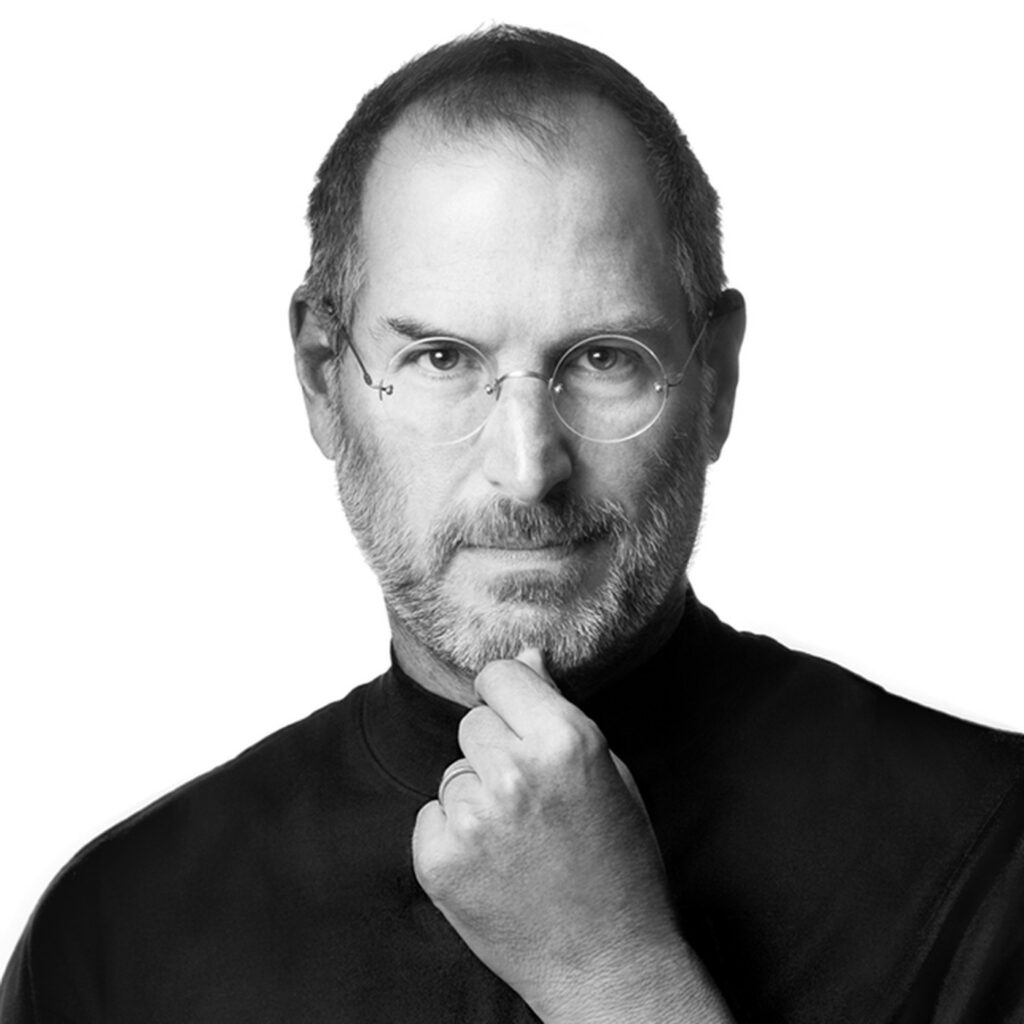Steve Jobs: The Visionary Founder Who Transformed Apple and the Tech Industry

Introduction
In the pantheon of technological innovators, few names shine as brightly as Steve Jobs, the co-founder of Apple Inc. Steve Jobs was not just a visionary entrepreneur; he was a driving force behind the personal computer revolution, the digital music revolution, and the smartphone revolution. This extensive article delves deep into the life, achievements, and impact of Steve Jobs, tracing his journey from the garage to the pinnacle of the tech industry and exploring the lasting legacy he left behind.
Section 1: Early Life and Education
1.1 Childhood and Adoptive Parents
Born on February 24, 1955, in San Francisco, California, Steven Paul Jobs was the biological son of Joanne Schieble and Abdulfattah Jandali. However, due to personal circumstances, he was put up for adoption. Paul and Clara Jobs, a working-class couple from California, adopted him, giving him a stable and nurturing home. Growing up in Cupertino, Jobs demonstrated early signs of curiosity and creativity.
1.2 College Years and Dropping Out
Steve Jobs enrolled at Reed College in 1972 but dropped out after just one semester. Despite leaving formal education, Jobs continued attending classes that interested him, such as calligraphy. This seemingly random choice would later influence the design aesthetics of Apple’s products.
Section 2: Co-founding Apple Inc.
2.1 Formation of Apple Computer, Inc.
In 1976, Jobs, along with his friend Steve Wozniak and Ronald Wayne, co-founded Apple Computer, Inc. in the Jobs family garage. The duo developed the Apple I, a single-board computer that marked the beginning of the personal computer era. Their partnership laid the foundation for what would become one of the most iconic and influential tech companies in the world.
2.2 Apple II and the Rise of Personal Computing
The release of the Apple II in 1977 catapulted Apple into prominence. The Apple II was the first pre-assembled personal computer, featuring a color display and a plastic case, setting it apart from other early computers. With its user-friendly design and accessible programming, the Apple II became a commercial success, solidifying Apple’s position in the growing personal computing market.
Section 3: Departure from Apple and NeXT
3.1 Turmoil and Resignation
Despite the success of the Apple II, internal conflicts arose within the company. In 1985, a power struggle led to Jobs’ resignation from Apple. This departure marked a turbulent period for both Jobs and the company he co-founded.
3.2 NeXT Computer
Undeterred by his exit from Apple, Jobs founded NeXT Computer in 1985, aiming to create high-end computers for the education sector. Although NeXT faced challenges, the company played a pivotal role in the development of the World Wide Web, as Tim Berners-Lee used a NeXT computer to create the first web browser and server.
Section 4: Pixar and the Entertainment Industry
4.1 Acquisition of The Graphics Group
In 1986, Jobs purchased The Graphics Group, a division of Lucasfilm, for $10 million. Renamed Pixar Animation Studios, it initially focused on creating hardware and software for the graphics industry. However, its breakthrough came with the release of “Toy Story” in 1995, the world’s first entirely computer-animated feature film.
4.2 Transformative Impact on Animation
Under Jobs’ leadership, Pixar revolutionized the animation industry, producing a string of critically acclaimed and commercially successful films, including “Finding Nemo,” “The Incredibles,” and “Up.” Pixar’s success solidified Jobs’ reputation as a visionary leader capable of disrupting traditional industries.
Section 5: The Return to Apple and the “Think Different” Era
5.1 Acquisition of NeXT
Amid financial challenges at Apple in the late 1990s, the company sought to revitalize its product line and innovation. In a surprising turn of events, Apple acquired NeXT in 1996, bringing Steve Jobs back into the Apple fold.
5.2 “Think Different” Campaign
Upon his return, Jobs assumed the role of interim CEO and launched the iconic “Think Different” advertising campaign. This campaign celebrated innovation, creativity, and the unconventional thinkers who had changed the world, capturing the essence of Apple’s ethos under Jobs’ leadership.
Section 6: The iPod, iTunes, and the Digital Music Revolution
6.1 Unveiling the iPod
In 2001, Jobs unveiled the iPod, a revolutionary portable digital music player. With its sleek design, intuitive interface, and the ability to store thousands of songs, the iPod transformed the music industry. Apple’s integration of hardware, software, and services set the stage for the company’s ecosystem approach.
6.2 iTunes Store
To complement the iPod, Jobs introduced the iTunes Store in 2003. This digital marketplace allowed users to purchase and download individual songs, disrupting the traditional model of buying full albums. The combination of the iPod and iTunes marked the beginning of the digital music revolution, fundamentally altering how people consumed and accessed music.
Section 7: iPhone and the Smartphone Revolution
7.1 Unveiling the iPhone
Perhaps Jobs’ most iconic moment came in 2007 when he introduced the iPhone. Combining a phone, an iPod, and an internet communicator, the iPhone redefined the smartphone landscape. Its multi-touch interface, App Store, and sleek design set new standards for the industry, making smartphones an integral part of modern life.
7.2 App Store and Mobile Applications
The launch of the App Store in 2008 further transformed the smartphone experience. Jobs’ vision of a platform for third-party developers to create and distribute applications resulted in an explosion of creativity and innovation. The App Store became a cornerstone of the iPhone’s success, offering a diverse range of apps that enhanced functionality and user engagement.
Section 8: iPad and the Tablet Revolution
8.1 Unveiling the iPad
In 2010, Steve Jobs introduced the iPad, a device positioned between smartphones and laptops. The iPad popularized the tablet form factor, offering a versatile and portable computing experience. Its intuitive touch interface and seamless integration with the App Store contributed to the tablet revolution.
8.2 Legacy of Innovation
Jobs’ ability to anticipate and shape consumer needs extended to the iPad, solidifying Apple’s reputation for introducing groundbreaking products that resonate with users. The iPad’s success underscored the impact of Jobs’ vision on the evolution of personal computing.
Section 9: Legacy and Lasting Impact
9.1 Design Aesthetics and User Experience
Jobs’ emphasis on design aesthetics and user experience permeated every Apple product. His obsession with simplicity, elegance, and functionality became synonymous with the Apple brand. The meticulous attention to detail, from hardware to software, has set a benchmark for the tech industry.
9.2 Ecosystem and Integration
Central to Jobs’ vision was the creation of a seamless ecosystem where Apple’s hardware, software, and services work in harmony. This approach, often referred to as the “Apple Ecosystem,” fosters customer loyalty and provides users with a cohesive and integrated digital experience across devices.
9.3 Cultural Impact and Leadership Style
Jobs’ leadership style, marked by his passion, charisma, and uncompromising pursuit of perfection, left an indelible mark on Apple’s corporate culture. His ability to inspire innovation and demand excellence from his team shaped Apple into a company that consistently pushed the boundaries of what was possible.
Section 10: Health Struggles and Passing
10.1 Battle with Pancreatic Cancer
In 2003, Jobs was diagnosed with a rare form of pancreatic cancer known as a pancreatic neuroendocrine tumor. He initially chose alternative therapies before undergoing surgery in 2004. Despite his health challenges, Jobs continued to lead Apple, maintaining a level of secrecy about his condition that fueled speculation and concern.
10.2 Resignation and Passing
In August 2011, Jobs resigned as Apple’s CEO, handing the reins to Tim Cook. On October 5, 2011, Steve Jobs succumbed to complications from his long battle with pancreatic cancer at the age of 56. His passing marked the end of an era and prompted an outpouring of tributes from around the world.
Section 11: Reflections on Steve Jobs’ Legacy
11.1 Visionary Innovation
Steve Jobs’ legacy extends beyond the products he created; it resides in his visionary approach to innovation. Jobs had an uncanny ability to anticipate consumer needs, envision products that did not yet exist, and bring them to life. His impact on the tech industry transcends the physical devices Apple produced, influencing how technology is perceived and integrated into daily life.
11.2 Entrepreneurial Spirit
Jobs’ entrepreneurial spirit and resilience in the face of setbacks serve as an inspiration for aspiring innovators and business leaders. His journey from a college dropout to co-founding one of the world’s most valuable companies exemplifies the transformative power of determination, creativity, and an unwavering belief in one’s vision.
11.3 The Art of Simplicity
Jobs’ design philosophy was grounded in simplicity and elegance. He believed in stripping away complexity to create products that were not only functional but also aesthetically pleasing. This commitment to simplicity has had a profound influence on the broader design landscape, extending far beyond the tech industry.
11.4 Lasting Impact on Multiple Industries
Jobs’ influence reaches beyond the tech sector, shaping industries ranging from animation and music to smartphones and personal computing. His ability to disrupt and redefine traditional paradigms has left an enduring imprint on the business world.
Conclusion
In conclusion, Steve Jobs was not just a co-founder of Apple Inc.; he was a transformative figure whose impact reverberates through the fabric of modern technology and culture. Jobs’ ability to blend technology with artistry, to think differently, and to create products that resonate with users have etched his name into the annals of innovation.
As we reflect on the life of Steve Jobs, it becomes clear that his legacy extends beyond the tangible products he introduced. It lies in the intangible ideals of creativity, passion, and the pursuit of excellence. Steve Jobs not only changed the way we use technology; he changed the way we perceive and interact with the world around us, leaving an indelible mark on the past, present, and future of innovation.




